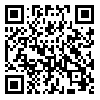BibTeX | RIS | EndNote | Medlars | ProCite | Reference Manager | RefWorks
Send citation to:
URL: http://hakim.tums.ac.ir/article-1-1164-en.html
Babashahy S1, 2 (MSc), Akbari Sari A1 * (MD, PhD)
1 Department of Health Management and Economics, School of Public Health,
Tehran University of Medical Sciences, Tehran, Iran
2 Department of Health Economics, Iranian Ministry of Health and Medical Education, Tehran, Iran
Received: 8 Apr 2012, Accepted: 13 Jun 2013
Abstract
Introduction: Dual practice in both public and private settings is an important challenge of many healthcare systems. The main aim of this study was to explore the experiences of other countries regarding dual practice and to explore their monitoring mechanisms.
Methods: International databases and websites including Pubmed and Google scholar were searched to identify relevant reports from 1990 to 2011. Narrative synthesis was used to summarize the study results categorized by regulatory mechanisms, targeted groups, country settings and outcomes.
Results: C omplete prohibition , dual practice allowed with restrictions, and allowed without restrictions were regulatory mechanisms applied by different countries with different income levels. These mechanisms have positive and negative outcomes. Greece, Italy, UK, Spain, Australia and the US are high income countries allow dual practice with restrictions. Furthermore, some low income countries such as Kenya and Zimbabwe use licensure restrictions and others such as Egypt and Bangladesh allow dual practice without restrictions.
Conclusion: Dual practice with restrictions in both public and private sectors is the most common regulatory mechanism. In addition to well policymaking, applying analytical perspectives and evaluation of different mechanisms in different settings, taking considerations to the executive issues and preparing infrastructures and prerequisites is so vital for implementing the regulatory mechanisms.
Key words: dual practice, regulatory mechanism, full time program, health care reform
Please cite this article as follows:
Babashahy S, Akbari Sari A. Assessment and Analysis of International Experiences in Dual Practice in Public and Private Settings of Healthcare System and Regulatory Mechanisms. Hakim Research Journal 2013 16(2): 98-106.
* Corresponding Author: Department of Health Management and Economics, School of Public Health, Tehran University of Medical Sciences, Keshavarz Blvd, Tehran, Iran. Tel/Fax: +98- 21- 88989129, E-mail: akbarisari@tums.ac.ir
Received: 2013/09/23 | Published: 2013/07/15
| Rights and permissions | |
 |
This work is licensed under a Creative Commons Attribution-NonCommercial 4.0 International License. |





